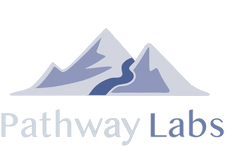In recent years, technological advancements have revolutionized the education sector, including the implementation of student information software (SIS) in various educational institutions. Vocational schools, which provide specialized training and education for specific careers, are no exception to this digital transformation.
An SIS has become an integral part of managing student data, streamlining administrative tasks, and enhancing communication within vocational schools. As we move forward, the future of SIS usage in vocational schools holds great promise and potential. In this post, we will explore the emerging trends and potential benefits of SIS usage in vocational schools.
Enhanced Data Management and Reporting
One of the primary advantages of utilizing an SIS in vocational schools is the efficient management of student data. Traditionally, tracking student information and progress relied on paper-based systems that were time-consuming and prone to errors. However, with an SIS in place, all student data can be stored and managed digitally, allowing for easy access, retrieval, and analysis.
The future of SIS use in vocational schools will witness advanced data analytics capabilities. SIS platforms will integrate with learning management systems (LMS) to track students' academic progress, attendance records, and assessment results in real-time. This comprehensive data will enable vocational schools to generate accurate and customized reports, providing valuable insights into student performance and areas for improvement. For example, MyPath has an extensive reporting system and data visualization tool built directly into the SIS. Such data-driven decision-making will aid educators in developing personalized learning plans for students, leading to better outcomes.
Streamlined Administrative Tasks
Vocational schools often face significant administrative burdens, including student enrollment, scheduling, and record-keeping. SIS platforms have already simplified these tasks to a great extent, and the future will see further automation and streamlining of administrative processes.
With advancements in artificial intelligence (AI) and machine learning (ML), SIS will be capable of automating routine administrative tasks. Student enrollment processes will become more efficient with automated application processing, document verification, and enrollment confirmation. SIS will also offer intelligent scheduling algorithms, optimizing class timetables and ensuring optimal resource allocation.
Moreover, the future of SIS will likely involve integration with financial systems, allowing for seamless management of student fees, scholarships, and financial aid. This integration will reduce manual errors, improve transparency, and enable vocational schools to allocate resources more effectively.
Improved Communication and Collaboration
Effective communication and collaboration among students, teachers, and parents are vital for the success of vocational schools. SIS platforms have already provided avenues for improved communication, such as secure messaging systems and parent portals. However, the future holds even more exciting possibilities.
Future SIS platforms will leverage emerging technologies like virtual reality (VR) and augmented reality (AR) to create immersive learning experiences. Students will be able to collaborate virtually, engage in group projects, and access course materials in innovative ways. Additionally, teachers and parents will have enhanced communication channels, enabling regular updates on student progress, attendance, and disciplinary matters.
The integration of SIS with mobile applications will further facilitate communication, allowing stakeholders to access information on-the-go. Push notifications and instant messaging will ensure timely updates, event reminders, and important announcements, fostering stronger school-home partnerships. For example, with MyPath, schools are able to easily communicate with students through SMS and have seen 5x as much engagement than with just email communication.
Personalized Learning and Individualized Support
Every student has unique learning needs and goals. The future of SIS in vocational schools will focus on personalized learning and providing individualized support to students.
Advanced SIS platforms will incorporate adaptive learning technologies, leveraging AI and ML algorithms to analyze student data and provide tailored learning pathways. Students will benefit from personalized recommendations, adaptive assessments, and targeted interventions based on their strengths and weaknesses. This personalized approach will enhance student engagement, motivation, and overall learning outcomes.
Moreover, SIS will enable vocational schools to identify at-risk students more effectively. Early warning systems will utilize predictive analytics to flag students who may require additional support. This proactive approach will allow educators to intervene promptly, offer guidance, and ensure that students stay on track to achieve their vocational goals.
Bringing It All Together
As vocational schools embrace the digital age, student information software (SIS) will continue to play a crucial role in transforming administrative processes, improving communication, and enhancing the overall learning experience.
The future of SIS in vocational schools promises streamlined data management, automated administrative tasks, improved communication channels, and personalized learning opportunities. By harnessing the power of emerging technologies, vocational schools can maximize student success and prepare the workforce of tomorrow.
If you’re looking to adopt a start of the art SIS for your own organization, click here to learn more about MyPath.

